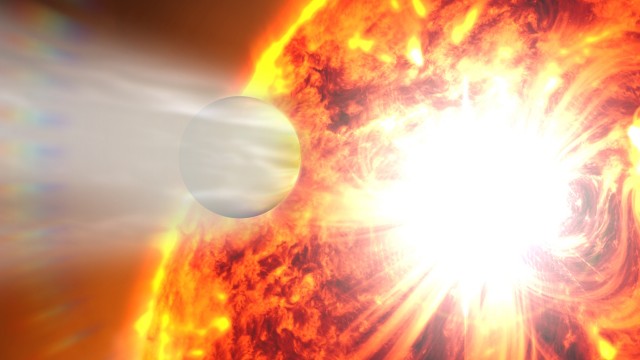Puffed-up hot Jupiters may be getting an electric charge
Ars Technica » Scientific Method 2013-06-16

One of the neat things about the huge catalog of extrasolar planets we now have is that they're revealing problems we never knew we had. Previously with only one solar system to look at, it was possible to create models that explained its formation and behavior. But when confronted with hundreds of exosolar systems—many with features very different from our own—the holes in some of these models become very obvious.
The difference was made apparent by a publication that I only recently became aware of. The problem is a relatively subtle one: many of the "hot Jupiters" that orbit close to their host stars are physically larger than their mass indicates they should be. There are a number of competing models that seek to explain this apparent discrepancy, but Derek Buzasi, a researcher at Florida Gulf Coast University, has added another one. His work suggests that the solar magnetic field could have possibly created an electrical current that flows through the planet—with hundreds of megavolts of potential.
The issue causing the confusion is pretty simple. Gas giants, as their name implies, are mostly gas. Their density is set by the competing forces of gravity and pressure, with the pressure being a product of the temperature of the planet. The temperature in turn is set by a combination of the energy input from the local star and the heat left over from the gas' gravitational collapse into the planet. Given the age of the exosolar system, we can calculate both of these values and therefore provide an estimate of what the planet's density should be.
Read 7 remaining paragraphs | Comments